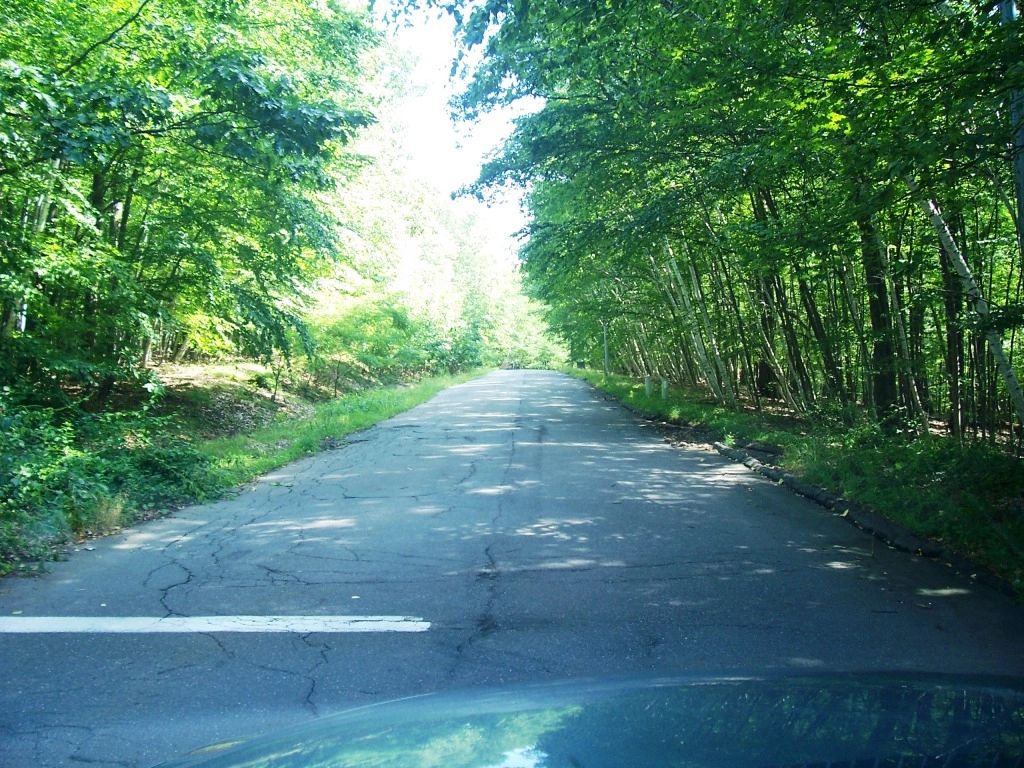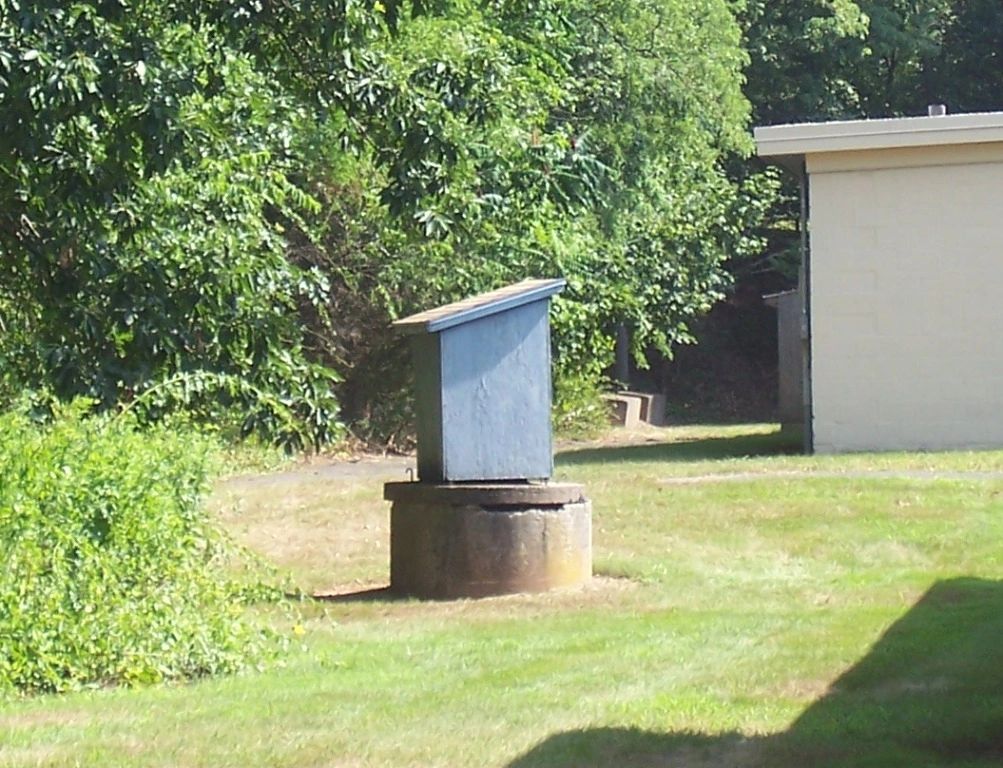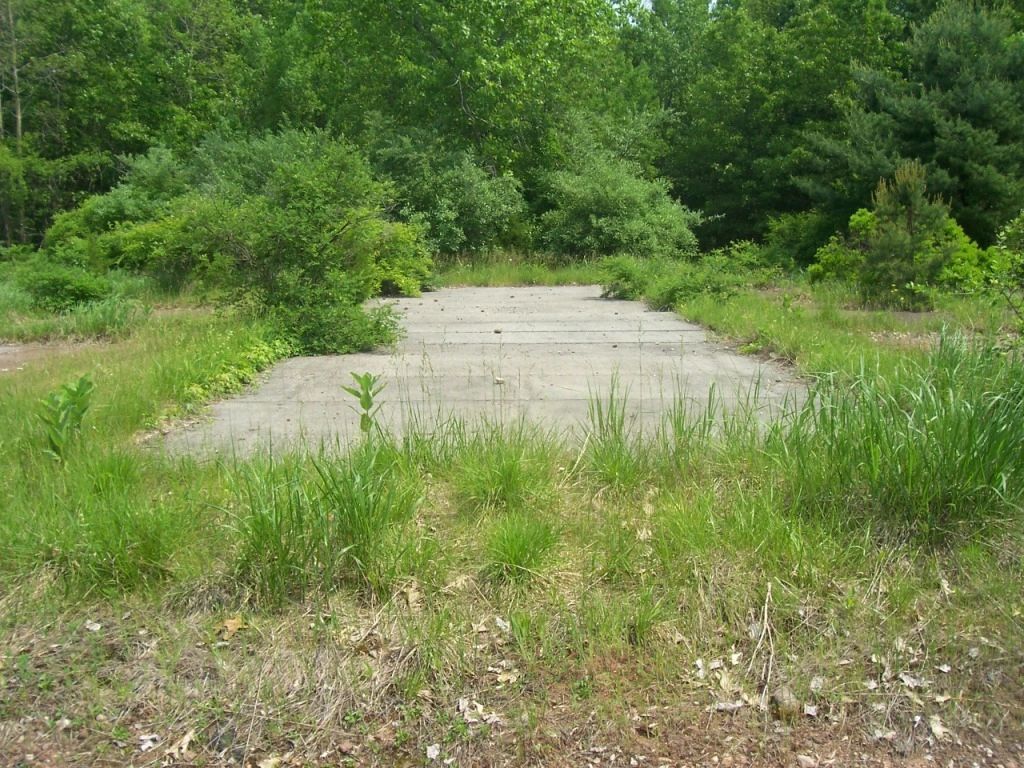Nike HA-25 Manchester
If you were stationed at this Nike site, or any of the nearby sites in CT or MA, we'd love to hear from you. Please contact us at webmaster@coldwar-ct.com
This site was operational from 1956 thru 1961.
Types of missiles: Nike 1B, 2C/30A/12L-A (Ajax only).
The launch site was on Line Rd. The property is currently privately owned.
The IFC was at 110 Garden Grove Rd. After the Army left in the early sixties the IFC site was taken over by the town of Manchester who used the buildings for a Parks and Recreation center.
One contributor toured the Manchester IFC/radar site in 1973, shortly after the military vacated the property:
"Up on the hill where the radar dishes had been I found a small concrete building, approximately 20' x 30'. It had no door and had been valdalized. I recall that it had extremely thick walls and inside the front door was a maze of right angle turns I assume to keep radiation out, similar to what I have seen in various fallout shelters. Inside the building was a single room and I could clearly see where a large electronic console used to sit . . . the housing was still there and there were dozens of wires coming out of the floor leading into the housing. Exiting the structure I noticed a large wooden panel by the outer door with pegs for various odd shaped hand tools, probably specialized wrenches and the like. I could tell because the tools, long gone, had been outlined in paint on the board. I'm not sure what the function of the building was and unfortunately there is no sign of it on the property today."

Perhaps what the contributor saw was the remains of
a radar console although those were usually installed
in mobile trailers.

In place of the original guard shack visitors are greeted by
this sign identifying the former Nike missile site as a
Town of Manchester recreation area.

Access road leading to the radar and control site.

Most of the original building are still standing and many of them are in pretty good shape.


This building reportedly contained a shooting range. Inside ranges were not common at Nike sites, many had outside ranges, but since the Manchester IFC was a regional HQ it would make sense for it to have a range so security personnel could periodically requalify with their weapons in all kinds of weather.





Looking back down towards the entrance.



Former motor pool?


One fro the buildings is being used as a pre-school.

This pump building and water tank are located up on the hill behind the main buildings where the radar dishes and control vans were situated, now long gone.

Similar set up at another site, 1965.


Nike sites required a significant amount of electrical power
as indicated by these old 3-phase power poles. Utility power was backed
up by a diesel generator. Whenever the site went on alert status
the switch would be made from utility power to on site generator
power.

Road to area on top of hill where radars were located.

This foundation at the top of the hill has 3 pads most likely from the legs of a radar platform.

It is not uncommon for streets in the vicinity of old Nike sites to have
related names. Here we have Hercules Dr, probably derived
from the name of the 2nd generation Nike missile.
At other sites we've seen roads with names like "Redstone,"
"Mercury," and "Military".

Map showing location of Admin. and IFC base and location of Launcher area.

Missile Battery (Launcher) area on Line St.


When the facility was active visitors to the site were greeted by a armed guard at the front gate. This photo is from the nearby Windsor, CT IFC site. We're told that the button on the little box on the gate was a panic alarm most often used to notify the duty officer of unscheduled inspections.

Main entrance to former launch area.

The buildings have collapsed.

One of several utility manholes.

After sixty-plus years the access road is still visible.

Utilities were underground.
The next few images show the three missile batteries at the Manchester site. Each battery had four missiles that could be made ready to launch on above ground rails with additional missiles stored in the bunker below ground. Missiles could be raised to the surface using a large elevator (the steel doors of which have been covered in concrete at this site). Each Nike site had to have at least one battery of four missiles ready to fire on five minutes warning. Another set of four had to be ready to fire on fifteen minutes warning.


The high tension wires were installed some time after the site
was decommissioned. The metal plate protected the concrete from the heat of
the rocket engine.





One of three launcher pads at the site. Each pad could support four missiles on above ground rails, with additional missiles stored underground. A large elevator
was used to bring the missile to the surface. The steel plates were blast shields
would have protected the concrete from the heat of the rocket engines.
The bunker below was probably partially filled with debris when the site was decommissioned. Many batteries have flooded over the years.

The roof of the largest building on the site, probably a barracks.

Looking down inside an underground concrete structure reveals that it
contained a water well.

Metal blast shield.
Each battery had two personnel hatches, a main entrance with a steel
staircase and an emergency escape hatch with a ladder.

File photo of the undeground portion of a typical Nike missile battery.
Image courtesy of our friends at civildefensemuseum.com.

The image above, courtesy of our friends at the civildefensemuseum.com are
representative of what the underground missile batteries looked like.

Typical underground launch battery.

The image above, from the nearby Portland Nike site, is representative of
what was on top of the Manchester Nike batteries.

Remains of small building near the front gate . . . probably the guard shack.

Remains of a security fence. Security at Nike sites was upgraded when the
nuclear-tipped Hercules missiles were installed in the early 60s. The number
of guards was increased and attack dogs were added.

Apparently the steel battery elevator doors were sealed with concrete.

These ports in the battery area were used for wires which connected from the
underground missile firing equipment to the above ground missiles.

Nearly all of the buildings on the site have collapsed.





Sidewalk to the fueling area.

Fueling area surrounded on three sides by earthen berms.

Remains of decontamination shower adjacent to the fueling area. The Nike Ajax missiles deployed at the Manchester Nike site used Red Fuming Nitric Acid as fuel . . . a very dangerous chemical.
Amateur video from 2012
//www.youtube.com/watch?v=iIysclUAe6o


